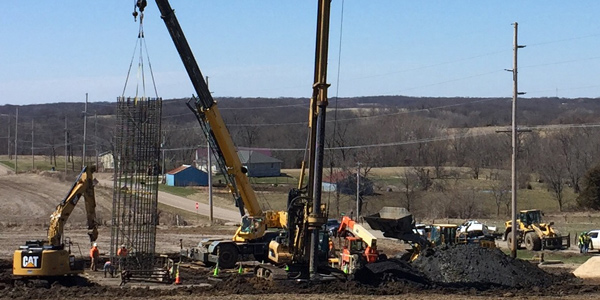By Christen Smith
PJM’s incumbent transmission owners must sign designated entity agreements (DEAs) just the same as the nonincumbent developers building projects in their zones, FERC said Tuesday in an order denying rehearing on the issue.
The commission held firm to its position, explained in its original July 2018 ruling, PJM’s proposal to exempt incumbent TOs from signing DEAs because it would give them an undue advantage over non-incumbents (ER18-1647). (See FERC Rejects PJM Exemption for Incumbent TOs.)
It also rejected arguments by PJM and incumbents that the two groups of TOs were not “similarly situated” because each face different service mandates and penalties for falling short of those mandates.
“‘To say that entities are similarly situated does not mean that there are no differences between them; rather, it means that there are no differences that are material to the inquiry at hand,’” FERC said, quoting language in a separate February 2018 ruling involving NYISO TOs (ER15-2059-002, ER13-102-008). “Likewise, the courts have explained that entities are similarly situated if they are in the same position with respect to the ends that the law seeks to promote or the abuses that it seeks to prevent, even if they are different in many other respects.”
FERC said that in past rulings it has held new and existing generators to the same standards for reactive power compensation, and equally applied transmission curtailments among non-federal renewable resources and federal hydroelectric and thermal services “because they all take firm transmission service.”
PJM and incumbent TOs requested rehearing in August 2018. Under current rules, both incumbent and nonincumbent TOs sign DEAs, which terminate once construction is complete. Nonincumbent TOs — competitive developers whose project proposals are selected by PJM through the FERC Order 1000 process — must also execute a consolidated transmission owners agreement (CTOA) before the prior contract can expire.
Notably, the commission said, breaching a DEA proves far easier and more expensive for nonincumbent TOs, which are subject to meeting construction milestones that may be delayed for reasons beyond their control. However, incumbent TOs only risk breaking the terms of a CTOA by missing scheduled in-service dates. Unlike incumbents, nonincumbent TOs must also “obtain a letter of credit or other financial instrument equal to 3% of the incremental project cost in the event of a breach,” meaning this extra cost must factor in project submissions, making the incumbent TO’s proposal cheaper by default.
The incumbent TOs “fail to recognize that the penalties for such noncompliance are not comparable to the upfront costs associated with the security requirement in the Designated Entity Agreement,” FERC wrote. “The penalty provisions of the Consolidated Transmission Owners Agreement are implicated only in the event of breach or other specified noncompliance, while the security requirement of the Designated Entity Agreement, as discussed above, necessarily increases a nonincumbent transmission developer’s costs. Further, due to the potential number and frequency of breach events, [the incumbent TOs’] comparison is inapt.”
FERC did accept PJM’s proposed Tariff revision that sets the time period for a transmission developer to accept its designation as a designated entity for 60 days after receiving an executable DEA, effective July 16, 2018.



